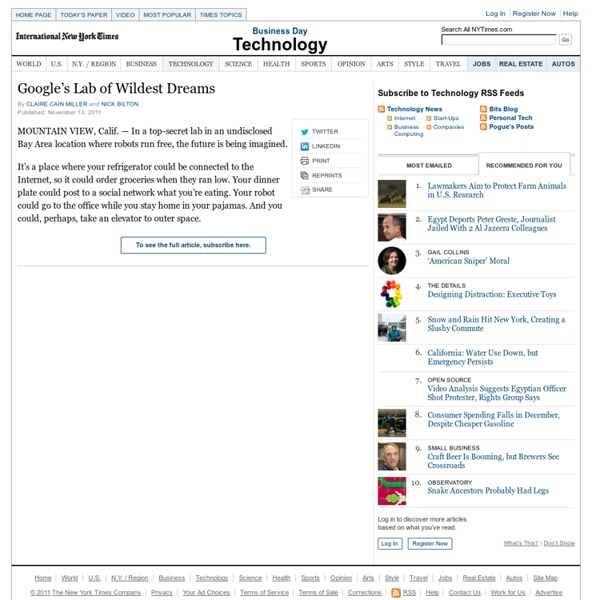At Google X, a Top-Secret Lab Dreaming Up the Future

Google Zeitgeist, Like TED, Focuses on Big Picture
Kevin Lee | September 30, 2011 | 0 Comments inShare36 Five trends touched on at the Zeitgeist conference that will have a significant impact on SEM. This week, Google held its thought-provoking conference, Zeitgeist. Like TED, the Zeitgeist conference sessions are designed to inspire, educate, and broaden the horizons of the attendees while allowing some additional time for schmoozing and fun. In prior years, the event was strictly off the record, but with the proliferation of Twitter, there was a constant stream of observations, comments, and discussions flying around the Twittersphere throughout the conference. Cory Booker (Newark, NJ mayor) Adam Braun (founder, Pencils of Promise)Deepak Chopra (needs no introduction) Larry Page and Eric Schmidt Mark Cuban (chairman and CEO, HDNet) What do these videos have to do with paid search strategies? Also, if you don't love this stuff (PPC search, online advertising, social media, etc.), have someone else do it for you.
Related:
Related:



